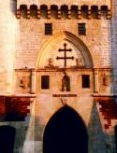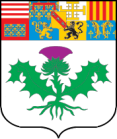Nancy Cross
On the Prussian border, the area has seen much fighting throughout its 3,000 year history. Unsurprisingly, behind the town's elegant facade of sophistication is the gritty motto: Non inultus premor - 'I cannot be touched with impunity'.

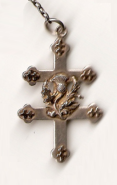
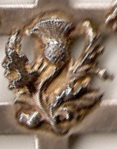
Central detail of thistle with small cross
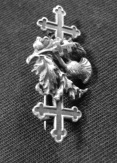
Silver pin (from friends in Tasmania)
The photographs of these two Nancy Cross pendants were sent to us separately by people in the US, but the pendants most likely originate from Europe. Neither of them have any identification markings on the back, but on the front there's a prominent thistle. The thistle is a symbol of Lorraine and is a main feature in the coat-of-arms of Nancy, the former capital of Lorraine.
The first cross shown on the right is very small, measuring just 25 mm high and 17.5 mm wide. We don't know how old it is, beyond its discovery in an antique shop in 1969. It has the typical flowing curvilinear forms of Art Nouveau, for which Nancy is renown. These are plant-inspired motifs which appear in the art of several ancient cultures; from the Persian and Indian 'Paisley' swirls, to the New Zealand Koru, to the Far Eastern Tomoe.
The age of this second cross is also unknown. After the First World War, a North American soldier brought it from the area of Alsace-Lorraine, France, for his young sister in the United States.
An art collector has also sent us photographs of a ring in his possession, believed to have once belonged to Mary, Queen of Scots, which also shows the thistle with the Lorraine cross. This would date the thistle/cross combination to at least the 1500s.
The overall shape is that of a Lorraine Cross. A similar cross is seen in the flag of the area's separatist movement, the National Forum of Alsace-Lorraine, the bilingual borderland between France and Germany. This flag also dates from the First World War.
Interestingly, on the second cross we can see a tiny version of the same style repeated on each of the six buds, and there's a seventh tiny cross on the left side of the thistle. (Click any image to enlarge.) Note that there's just one cross on the thistle, and not balanced with another, implying that seven seems to be a significant number for this item.
The 'seven' is most likely in reference to the seven sacraments (rather than 7 virtues, 7 works of mercy, etc.) because the tiny cross is on the left side of the thistle. Conventional thought is that a Roman soldier pierced the right side of Jesus when he was on the cross, so religious art usually shows the lance on the left side of the cross. From this wound flowed the blood, and the Eucharist cup is usually in the centre of artistic renditions of the seven sacraments.
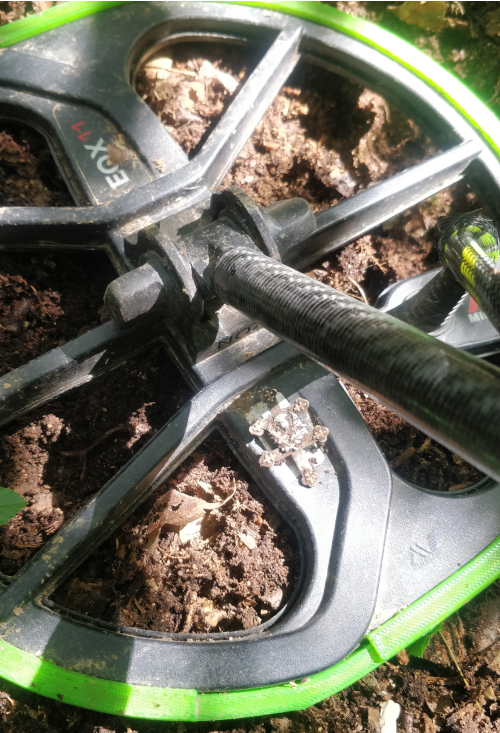 |
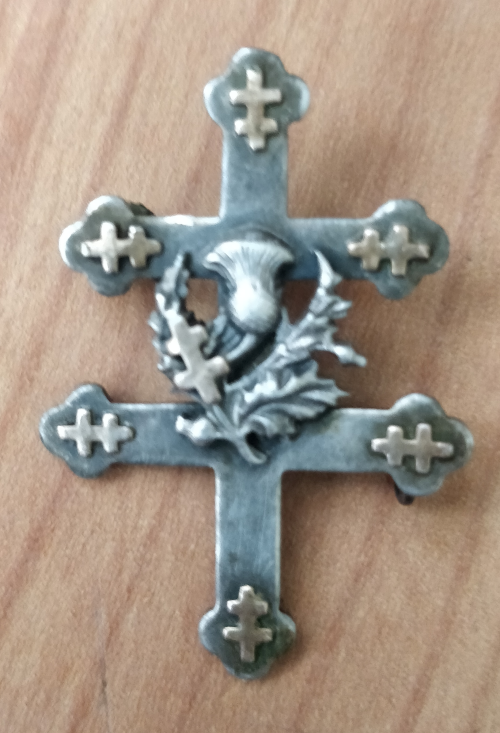 |
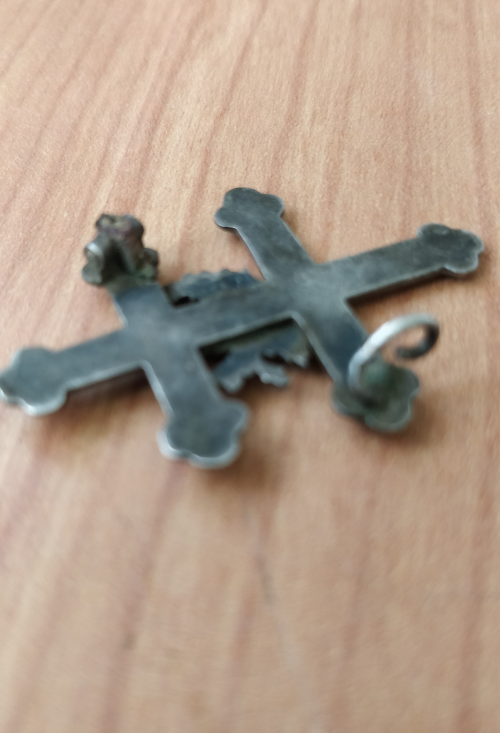 |
The latest addition for this page's collection was kindly sent by a French detectorist who found this 3.8 cm-high brooch buried in a Normandy wood, about 500 km west of Nancy. (The photo on the left shows how small it is, lying on the top of the detector's search coil.)
Careful cleaning revealed the brooch is mainly silver and the seven small crosses are gold. Sadly the pin had broken off, which might be why the original owner lost the brooch. Several other artifacts were found 30 cm - 40 cm below the surface in the same woods, including 14th century silver coins.
Amateur detectorists might not have the same background as professional archaeologists, but they can make significant contributions to history when they uncover artifacts and relics that offer valuable insights into the past.
The motto adopted by Nancy is Non inultus premor (I cannot be touched with impunity). Accidentally grasp a spiky thistle and you'll agree with that.
Scotland has a similar motto: Nemo me impune lacessit (No one wounds me with impunity) and the Scottish Royal coat of arms too incorporates the thistle.
Nationalforum Elsaß-Lothringen - Forum Nationaliste d'Alsace-Lorraine


